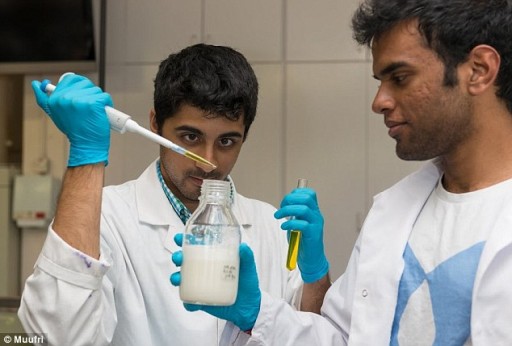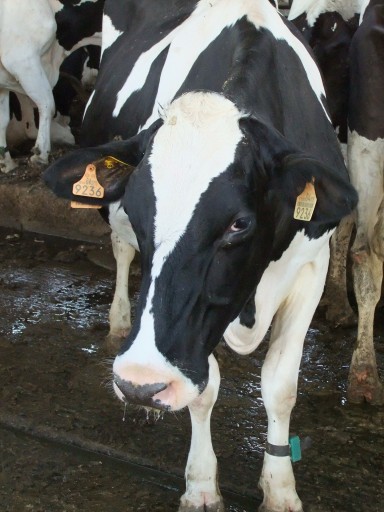Cow-free cow’s milk?!
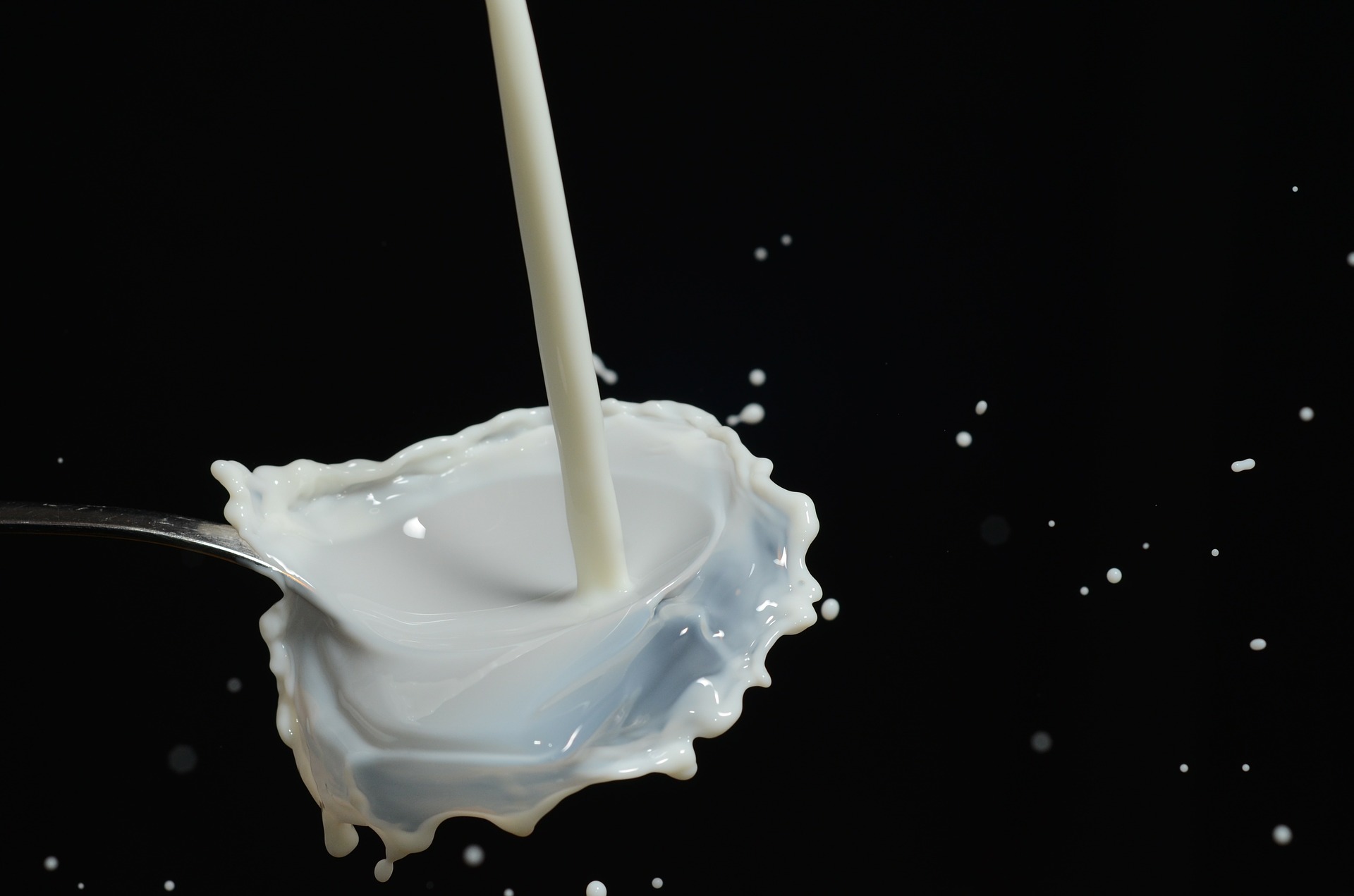
Yes, you read that right! Perumal Gandhi and Ryan Pandya, two bioengineers in San Francisco, California, are working on producing cow’s milk from a special variety of yeast that has been genetically engineered to produce milk proteins. Their concern for animal welfare and agricultural sustainability led them to create the world’s first artificial milk, Muufri (pronounced “Moo-free”). Muufri will have the exact same formula as the real thing and, therefore, will retain its taste and nutritional profile minus cholesterol and lactose.
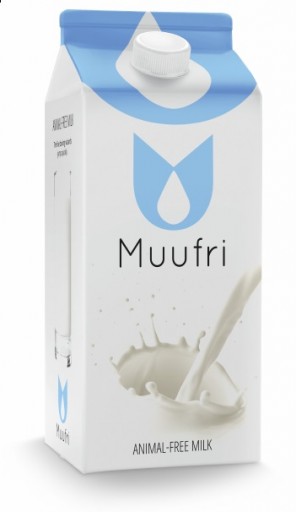
They use six key proteins for structure and function and eight key fatty acids for flavor and richness. These components can be manipulated to make cows, goats, or buffalo milk. They use the same principles of biotechnology used to make beer or vegetarian rennet. Since they can choose what goes into it, they can very well leave lactose out, which is great news for 75% of the adult population of the world who is lactose intolerant in varying degrees. And since the product will be free from all bacteria, there is no need for pasteurization, and the shelf life will be much longer! This is indeed great news for those who are having a tough time giving up their ice cream and cheese but care about sustainability and animal welfare.
“If we want the world to change its diet from a product that isn’t sustainable to something that is, it has to be identical [to], or better than, the original product,” Gandhi told Linda Qui at National Geographic. “The world will not switch from milk from a cow to plant-based milks. But if our cow-less milk is identical and priced right, they just might.”
Food and Agriculture Organization of the United Nations estimates that dairy production is responsible for 3 percent of global greenhouse gas emissions yearly. In 2011, the U.S. Department of Agriculture (USDA) produced the first detailed data on how large-scale dairy facilities contribute to greenhouse gas emissions. They monitored the emissions of ammonia, carbon dioxide, methane, and nitrous oxide from a commercial dairy with 10,000 dairy cows. The results indicated that, on average, the facility generated 3,575 pounds of ammonia, 33,092 pounds of methane, and 409 pounds of nitrous oxide daily (Leytem AB, 2011). A 2011 report by FAO estimates there were 260 million dairy cows in the world at the time. The waste produced by one cow is equal to that of 20-40 people, and studies show that parasites, viruses, hormones, pharmaceuticals, and antibiotic-resistant bacteria in the waste can contaminate nearby water. It can also flow from fields into waterways and contribute to harmful algal blooms and fish kills.
The life of a dairy cow is cruel and torturous, to say the least. Shortly after her first birthday, she will be restrained by being strapped down to a rack and artificially inseminated. Her gestation period isnine9 months, similar to human pregnancy. After she delivers, the calf is usually taken away from her within 24hr. Just two months after her delivery, she will be led right back to the rape rack to be artificially inseminated. For the remainder of her life, she will be pumped with genetically engineered growth hormones, drugs, and antibiotics and will be fed an unnatural diet that is low-fiber, high-protein, and includes animal by-products. She will be continuously kept pregnant because Mothers produce the most amount of milk during the first few months after delivery. Even though the life expectancy of cows is about 20-25 years (the oldest cow on record lived to be 49 years old!), like most dairy cows, she will be considered worthless when she is around five years old because her milk production will slow down due to the sustained milking. At that point, she will be slaughtered. Typically a dairy cow will give birth to 4 or 5 calves before she iskilledd. Most of the calves will end up in the veal industry. At the same time, the females will have their tails docked and horns removed, typically without any anesthesia, and will wait for the exact fate of physical and mental agony her Mother endures. Read more about dairy here.
“Fundamentally, you’re controlling the reproductive system of an animal. It’s incredibly invasive,” Pandya says. Gandhi also adds, “Making an entire cow to make just the milk is inefficient, You’re giving it all this feed and water, and most of it goes towards growing legs, growing a head, growing a liver and lungs—just living.” In contrast, their method will simply produce the milk.
It should be noted that this is not the only team attempting to create cow-less dairy products. There are others like Impossible Foods (started by a former Stanford University professor) working on cow-less American cheese to accompany its animal-free meat products and Real Vegan Cheese.
What about GMOs? “People who are anti-GMO who have legitimate concerns usually worry about supercrops taking over the natural world,” he says. “We’ve essentially crippled the yeast, so if it does go out in the world, it’ll produce only milk proteins and die within hours,” Pandya says.
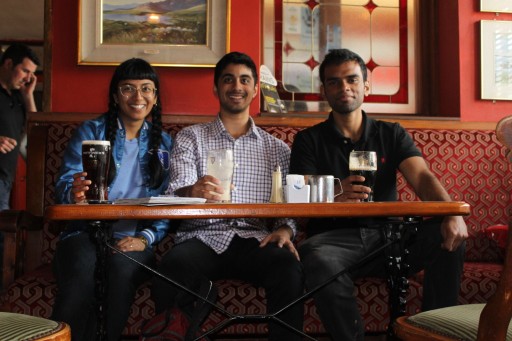
“Milk production using a cow worked, until a few decades back, when the human population was small, but that’s no longer the case; we need to innovate to allow everyone to be able to enjoy a glass of milk or their favorite dairy product 50 years from today.”
I, for one think they definitely have a point there!
